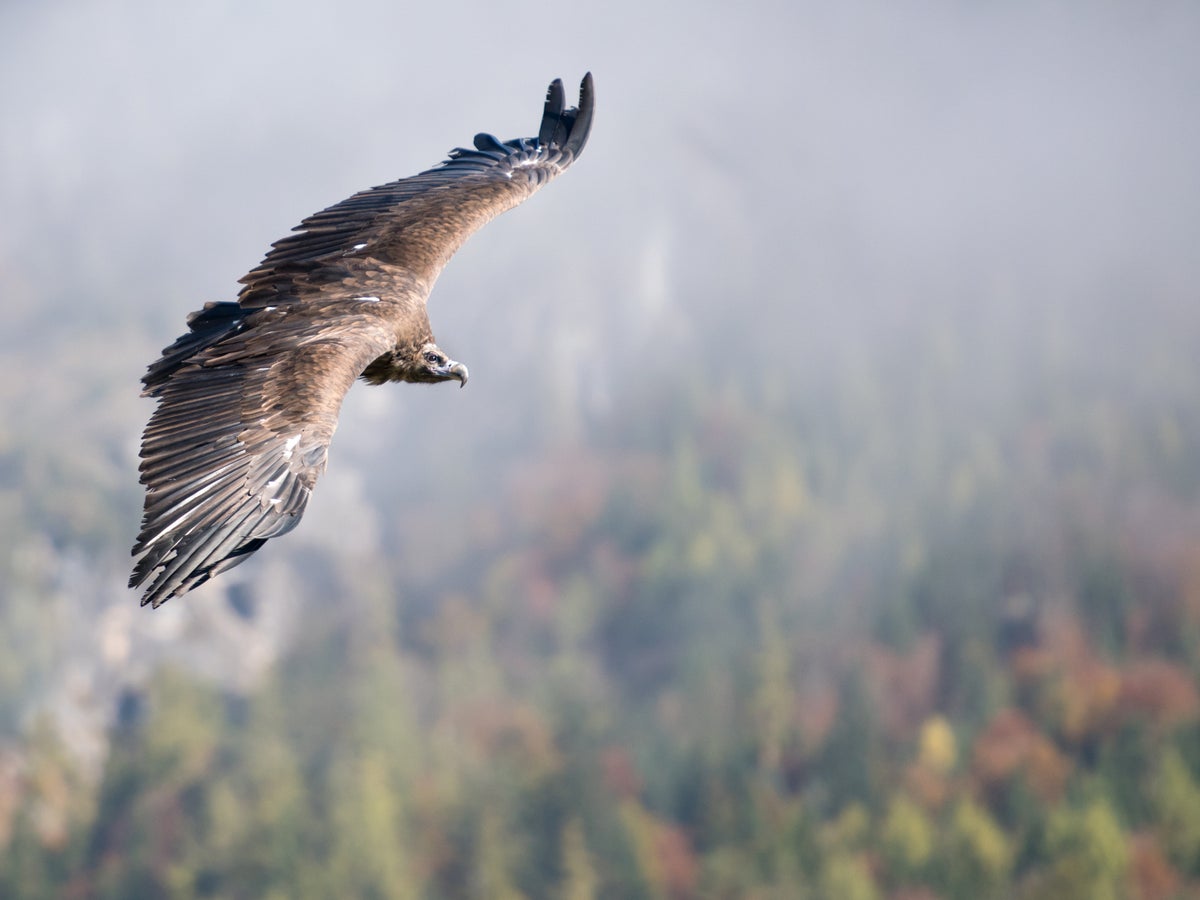[ad_1]

Europe’s largest and heaviest raptor, the cinereous vulture, once lived across the entire breadth of Europe, but numbers have declined over the last 200 years largely due to inadvertent poisoning, leaving fragmented populations clinging on.
But later this year the birds, also known as the black vulture, will return to the skies above the Rhodope mountain range, which stretches through southeastern Europe along the southern border of Bulgaria and into northeastern Greece.
The reintroduction is thanks to a rewilding project which has already relocated 17 of the birds from Spain, which are now being temporarily held in a large purpose-built aviary until they can be released, and hopefully help re-establish the species in the region.
Cinereous vultures are considered a “keystone species” within the mountain ecosystem, and focus their feeding on carcasses of small animals. This is considered an essential role, rapidly removing and recycling the bodies of dead animals, helping to halt the spread of diseases such as anthrax and rabies.
The enormous birds can have a wingspan of over 3 metres (9 and a half feet) and weigh more than 14kg (30 pounds).
The Rhodope mountains should provide an ideal habitat for the species, which was previously wiped out partly due to use of lead shot in hunting, which then passed up the food chain to scavengers.
The mountain range has already witnessed the successful reintroduction of red deer, fallow deer, bison, Karakachan horses and Konik ponies, and is also home to wolves, golden jackals, European ground squirrels (also known as sousliks) and brown bears.
The hope is that the reintroduction of the vultures will help fill in gaps in the birds’ historic range, meaning populations will stretch from Asia and the Middle East all the way to Spain and Portugal.
“This is our dream actually,” said Dobromir Dobrev, project coordinator for Birdlife Bulgaria, who is working with Rewilding Rhodopes to bring the vultures back.
“With natural restoration of the former breeding sites, mainly in the Balkans, these birds can be easily connected with the Alpine region and then the Iberian Peninsula,” he said.
The European cinereous vulture population is split in two, divided between a population cut off in the west and another remnant population isolated in the Balkans.
“The map we see now has a lot of holes,” said Deli Saavedra, head of landscapes at Rewilding Europe.
“In the lowest period, there were 200 pairs in Spain. All the other European populations, with the exception of a small colony in Greece with around 25-30 pairs, were extinct.”
From this historic low point in the 1970s, cinereous vultures have been staging a gradual recovery, aided by intensive conservation efforts.
Spain now supports more than 2,500 breeding pairs, and this population has become the source for successful reintroductions in the Pyrenees, the Cevennes in south, central France, and the French Alps.
[ad_2]
Source link















